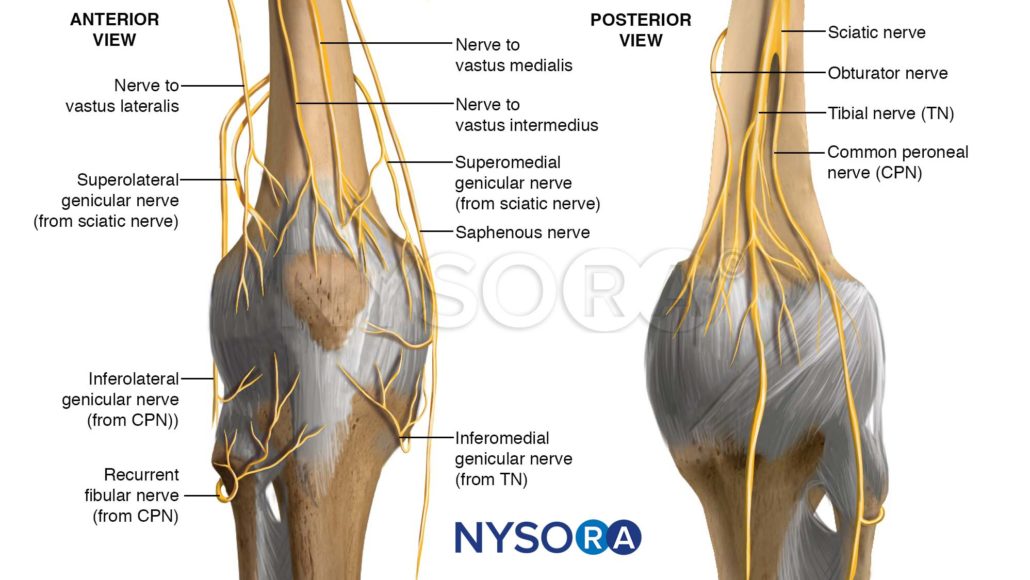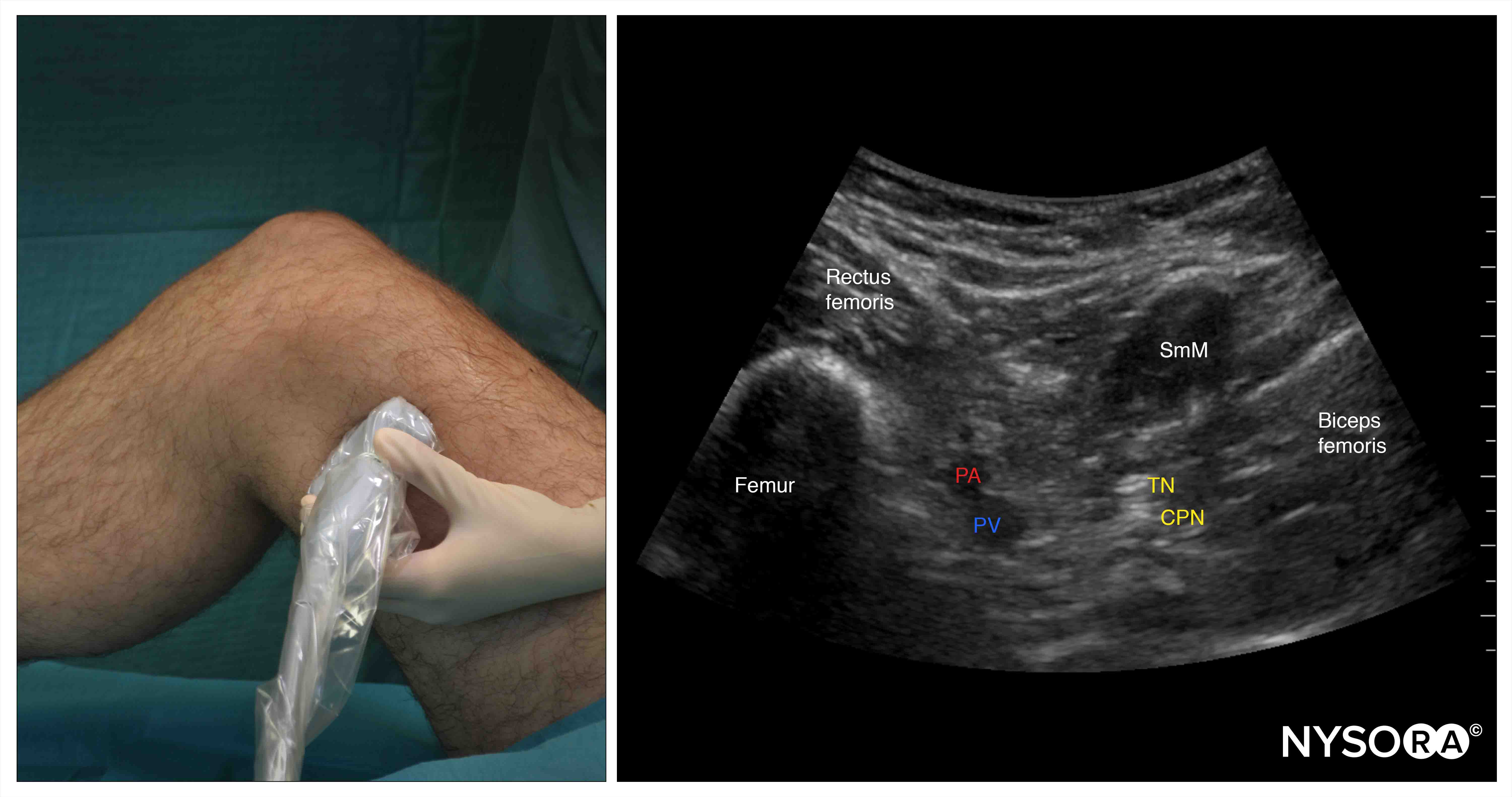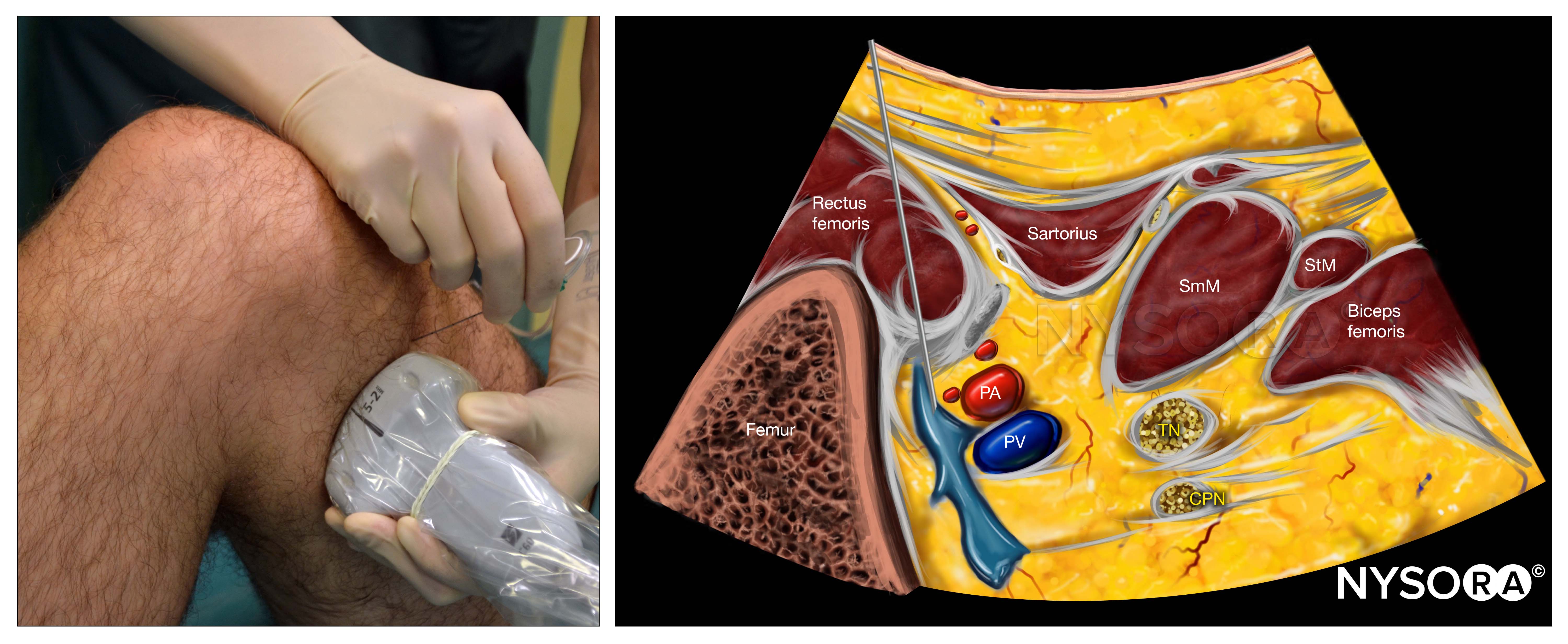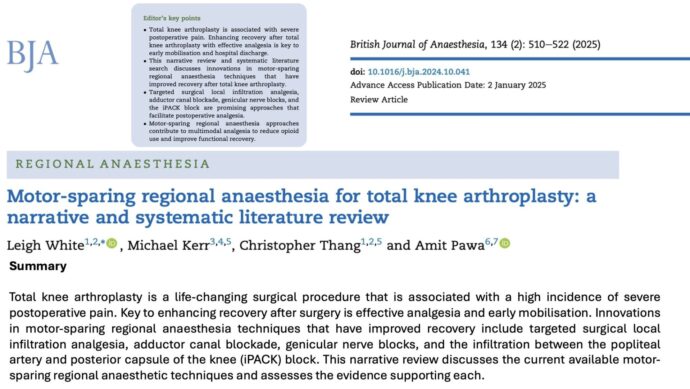
New Addition to NYSORA’s Compendium of Regional Anesthesia
INFILTRATION BETWEEN THE POPLITEAL ARTERY AND CAPSULE OF THE KNEE (IPACK BLOCK)
What is the rationale for the IPACK block?
While the sciatic nerve block results in the best analgesia for the posterior aspect of the knee, motor weakness of the lower extremity preventing early rehabilitation and masking intraoperative common peroneal nerve (CPN) injury do not make it an ideal analgesic modality. The IPACK block is a muscle strength-sparing technique that consists of an infiltration of local anesthetic into the interspace between the popliteal artery and the posterior capsule of the knee meant to be used as an alternative analgesic supplement to the femoral or adductor canal blocks to cover the posterior knee pain. This technique was first described by Dr. Sanjay K Sinha, Woodland Anesthesiology Associates in St. Francis Hospital, Hartford, CT, USA.





